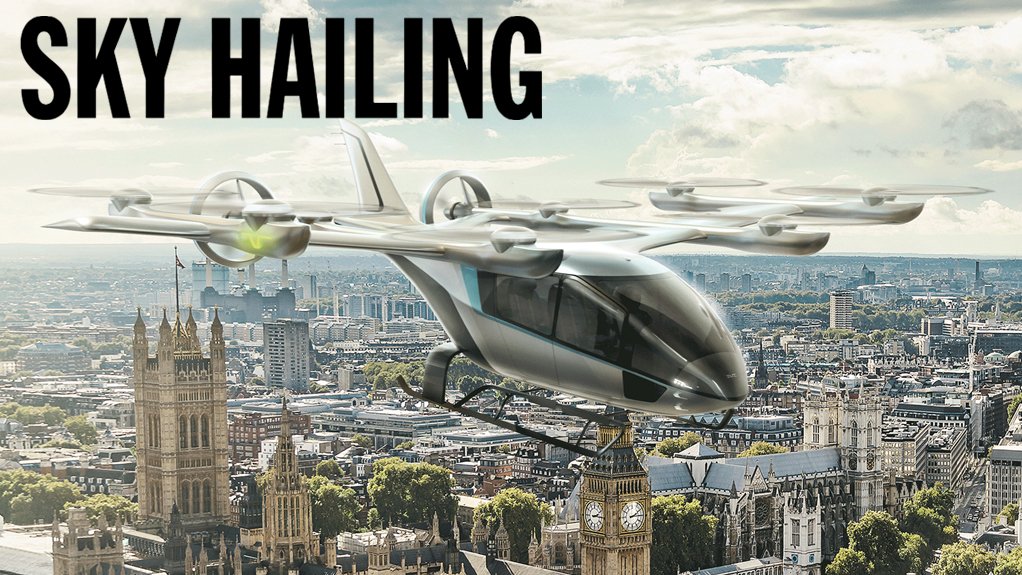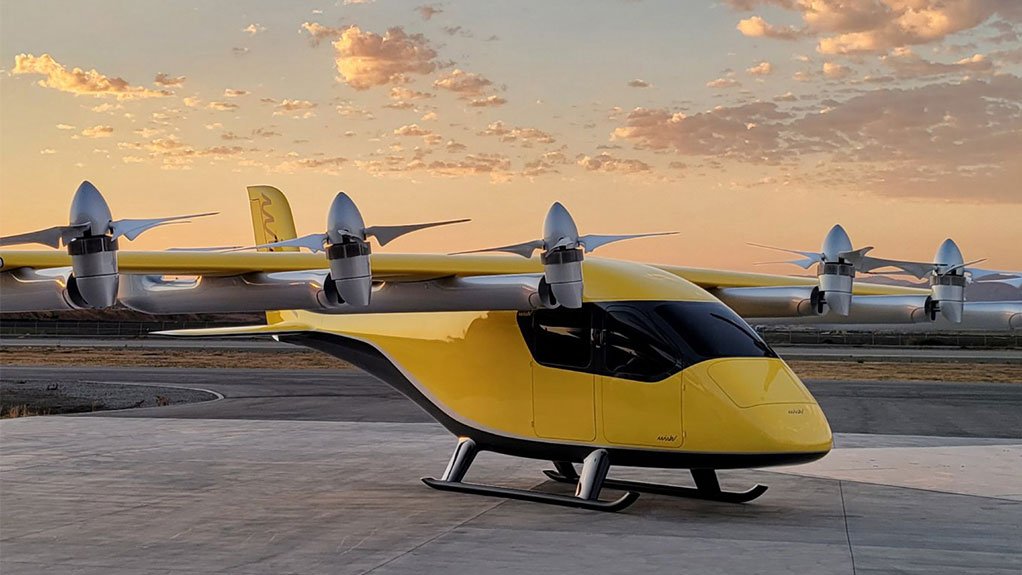Is the era of the flying taxi finally about to dawn?
The concept of small, usually unconventional, aircraft, carrying small numbers of passengers, weaving their way through towering skyscrapers and speeding over suburbs, has been a staple of especially visual science fiction – films, comic books (now pompously called ‘graphic novels’) and TV series – since at least the 1927 German silent film Metropolis. Now, however, it is on the verge of becoming reality. As a real-world concept, it is currently referred to as urban air mobility (UAM), which itself is sometimes also referred to as part of a wider concept, advanced air mobility (AAM).
“[AAM] aims to develop an air transportation system that moves people and cargo between local, regional, interregional and urban locations not previously served or underserved by aviation using innovative aircraft, technologies and operations. While AAM supports a wide range of passenger, cargo and other operations within and between urban and rural environments, UAM focuses on flight operations in and around urban areas,” is how the US Federal Aviation Administration (FAA) defines the concepts and their relationship.
“UAM is a new safe, secure and more sustainable air transportation system for passengers and cargo in urban environments, enabled by new technologies and integrated into multimodal transportation systems,” is the definition by the European Union (EU) Aviation Safety Agency (EASA). “The transportation is performed by electric aircraft taking off and landing vertically, remotely piloted or with a pilot on board.”
UAM embraces both cargo and passenger operations. Cargo operations will be executed using uncrewed aerial systems, popularly called drones. This is already being done, in a handful of locations, on an experimental basis, particularly in North America and Europe. Passenger operations are likely to start with on-board piloted aircraft, but later move to remotely piloted or even fully autonomous operation.
A really important point to make about UAM is that it is the first form of aviation designed from the start to be sustainable – to have a very low or zero carbon emissions footprint. UAM vehicle designs all use clean energy propulsion systems, the vast majority of them being some kind of electric propulsion.
The Business Case
“As urban populations grow and traffic congestion worsens, there is an increasing need for transportation options that can overcome these challenges and provide faster, point-to-point travel,” notes market research company MarketsandMarkets in its ‘Urban Air Mobility’ report, published last June.
“UAM offers a promising solution by leveraging airspace and vertical takeoff and landing (VTOL) capabilities to provide on-demand aerial transportation services. The demand for UAM arises from both individuals and businesses seeking improved mobility. Commuters are looking for faster and more efficient ways to navigate congested cities, while businesses require efficient logistics solutions to move goods swiftly and reliably. UAM addresses these demands by offering direct and rapid connections between urban locations, bypassing the limitations of ground infrastructure. Flexibility is a key aspect driving the demand for UAM. UAM vehicles, such as electric-powered drones or flying taxis, can transport passengers and cargo directly to their destinations, reducing travel times, compared to ground-based alternatives. This flexibility allows UAM to bridge gaps in existing transportation networks, reaching areas that are underserved by traditional ground infrastructure.”
Further, by moving transport of both goods and people into three dimensions, UAM will maximise the use of the existing transport infrastructure, while reducing the demand for new roads, railways and parking spaces. This, in turn, will help conserve valuable land and other resources, and reduce the environmental impacts that would occur with any expansion of terrestrial transport networks. Because almost all, if not all, UAM vehicles are and will be electrically powered, they will be quiet and reduce noise pollution (unlike, for example, helicopters).
Moreover, from the point of view of the authorities, the cost of creating the infrastructure needed to enable and support UAM operations will be only a fraction of that required for the building of new roads. And, as EASA points out, the risks of being involved in a fatal accident while in a flying taxi were lower than while travelling in ground transport.
By 2030, 60% of the global population will live in cities and towns. By that same year, MarketsandMarkets forecasts that the UAM market, worldwide, will be worth $28.5-billion, up from $3.8-billion this year (and $3.3-billion last year). This will be a compound annual growth rate (CAGR) of 33.5%. The continent expected to show the highest CAGR will be North America.
EASA has forecast that, by 2030, 340-million people will live in cities in the EU. The bloc represents 31% of the global UAM market and the development and deployment of UAM across the EU would create 90 000 jobs, again by 2030. Within the context of EU cities, UAM will cut standard average city travel time by 15 to 40 minutes, while cutting the time needed for emergency and medical deliveries by more than 70%.
Already, German startup Volocopter is hoping to be allowed to fly demonstration flights of its VoloCity two-seat – one pilot, one passenger – UAM aircraft (or vehicle: both terms are used) over Paris, during the Paris Olympics in July and August. All passengers will be pre-approved by EASA and will be non-fare paying. The VoloCity is clearly not a commercially viable design (the company is developing bigger designs) but the intent is to demonstrate the practicality and quietness of the UAM concept.
Types and Technologies
EASA groups UAM vehicles into three main design categories – vectored thrust, lift and cruise, and wingless. Vectored thrust designs have a number of large propellors that can be orientated horizontally, to act like helicopter rotors during take-off and landing, and then moved to a vertical orientation, to act as conventional propellors, and provide forward thrust. Lift and cruise designs have separate sets of small rotors or fans, to provide lift for take-off and landing, and propellors, to provide forward thrust. These rotors/fans and propellors might be powered by the same, or separate, propulsion systems. Wingless designs operate exactly like helicopters, except that, instead of using one or two big rotors, they use multiple (usually eight or more) small rotors to provide both lift and thrust.
In mid-February, website evtol.news, in a directory, listed 321 vectored thrust designs, 165 lift and cruise designs and 256 wingless designs. But it also listed 61 electric rotorcraft, that is, helicopters and autogyros. Autogyros, like helicopters, use rotors to provide lift, but, as the rotors are unpowered, they cannot also provide thrust, which must be supplied by a dedicated engine and propellor; autogyros cannot take off vertically, although their take-off runs are very short, but they can land vertically. It should also be noted that some UAM vehicle designs are hybrids of the above categories. For example, startup Horizon Aircraft is developing a UAM aircraft, the Cavorite X7, that uses its own patented fan-in-wing technology.
So, there is a plethora of UAM vehicle designs currently extant. Most will, of course, never be translated from computer model into hardware. And most of those that do reach the hardware stage will fail to succeed commercially. But the numbers of designs do indicate the enthusiasm for the UAM concept. But what might be an even stronger indicator of the credibly of UAM is the fact that all three of the great airliner original equipment manufacturers – in reverse alphabetical order Embraer (of Brazil), Boeing (US) and Airbus (Europe) – are actively developing UAM vehicles.
The three have chosen different frameworks to do so. Embraer started off with the project in-house, but then spun it out into a specially created and dedicated subsidiary company, Eve Air Mobility. Eve, as it is called for short, is actually domiciled in the US and listed on the New York Stock Exchange, and is currently owned 88.5% by Embraer. Boeing started by creating a joint venture (JV) with a startup named Kitty Hawk; the JV was named Wisk Aero. Last June, Boeing took full control of Wisk, but announced that its now wholly owned subsidiary would continue to operate as an independent company (with oversight from the Boeing board). Airbus started its UAM programme in-house and has kept it in-house ever since. The project is called CityAirbus NextGen and falls under the aegis of Airbus Helicopters.
As these three designs are almost certainly all going to result in flying prototypes, and all have a very good chance of entering commercial service, a closer look at each gives a good idea of what UAM vehicles will be like.
The CityAirbus NextGen (so-called because it follows two previous Airbus UAM technology demonstrators, both of which flew: the single-seat Vahana and the four-seat CityAirbus) is an all-electric lift and cruise design. To keep things as simple as possible, it has fixed wings and a V-shaped tail. Lift and thrust will be provided by eight propellors (although published images suggest that they will function as small rotors), powered by 16 electrical motors (to ensure redundancy). The vehicle/aircraft will initially (to speed certification) be flown by an on-board pilot, allowing for three passengers. Later, it will be converted to autonomous operation, allowing four passengers. It will have an operational range of 80 km and a top speed of 120 km/h. Its flight test programme will be conducted during this year, aiming at EASA certification next year. During early tests flights, it will be remotely operated.
Wisk Aero’s (Boeing’s) offering is currently known simply as the Generation 6, because it is the company’s sixth UAM design iteration. It is fitted with wings, each of which carries six propellors, three on the leading edge and three on the trailing edge (or, in total, six front and six rear propellors). The rear propellors actually serve as rotors, providing lift for vertical take-off and landing, while the front propellors can be rotated from horizontal (providing lift) to vertical (providing thrust). The design is thus a hybrid of vectored thrust and lift and cruise. Power is all electrical, and its range is forecast to be about 160 km, with a cruise speed of 222 km/h. It will carry four passengers, and will be operated autonomously from the start (with a ground-based human supervisor monitoring multiple vehicles). It is not yet clear when certification will be achieved, because the route and process of certifying autonomous passenger-carrying UAM vehicles has not yet been fully defined by the FAA.
Eve’s (Embraer’s) option is again all- electric and is a lift and cruise design, with eight small rotors mounted on fairings extending both ahead and behind the wings, for vertical take-off and landing, and a pusher propellor at the rear of the fuselage, for thrust. It will have a capacity of one pilot and four passengers (or, later, when operated autonomously, six passengers). It will have a range of 100 km; its cruising speed is reported to be 201 km/h. The vehicle’s first flight is expected this year, followed by a flight test campaign, with entry into service scheduled for 2026.
Constraints
There is, however, a major possible challenge facing the development of UAM. It’s not infrastructure. All the necessary air traffic management technologies already exist. And building ‘vertiports’ – the UAM equivalent of taxi ranks, bus terminals and heliports – will cost only a tiny fraction of the amount needed to build a new road. The constraint is people.
“The lack of qualified workers and skills poses a variety of problems for the market and industry for UAM. UAM systems need to be developed, [manufactured,] operated, and maintained successfully, which calls for highly qualified personnel with specialised knowledge in numerous technical fields,” highlights MarketsandMarkets. “Additionally, qualified experts in air traffic control and airspace management are required for the integration of UAM into current airspace and air traffic management systems.”
Article Enquiry
Email Article
Save Article
Feedback
To advertise email advertising@creamermedia.co.za or click here
Comments
Press Office
Announcements
What's On
Subscribe to improve your user experience...
Option 1 (equivalent of R125 a month):
Receive a weekly copy of Creamer Media's Engineering News & Mining Weekly magazine
(print copy for those in South Africa and e-magazine for those outside of South Africa)
Receive daily email newsletters
Access to full search results
Access archive of magazine back copies
Access to Projects in Progress
Access to ONE Research Report of your choice in PDF format
Option 2 (equivalent of R375 a month):
All benefits from Option 1
PLUS
Access to Creamer Media's Research Channel Africa for ALL Research Reports, in PDF format, on various industrial and mining sectors
including Electricity; Water; Energy Transition; Hydrogen; Roads, Rail and Ports; Coal; Gold; Platinum; Battery Metals; etc.
Already a subscriber?
Forgotten your password?
Receive weekly copy of Creamer Media's Engineering News & Mining Weekly magazine (print copy for those in South Africa and e-magazine for those outside of South Africa)
➕
Recieve daily email newsletters
➕
Access to full search results
➕
Access archive of magazine back copies
➕
Access to Projects in Progress
➕
Access to ONE Research Report of your choice in PDF format
RESEARCH CHANNEL AFRICA
R4500 (equivalent of R375 a month)
SUBSCRIBEAll benefits from Option 1
➕
Access to Creamer Media's Research Channel Africa for ALL Research Reports on various industrial and mining sectors, in PDF format, including on:
Electricity
➕
Water
➕
Energy Transition
➕
Hydrogen
➕
Roads, Rail and Ports
➕
Coal
➕
Gold
➕
Platinum
➕
Battery Metals
➕
etc.
Receive all benefits from Option 1 or Option 2 delivered to numerous people at your company
➕
Multiple User names and Passwords for simultaneous log-ins
➕
Intranet integration access to all in your organisation






















